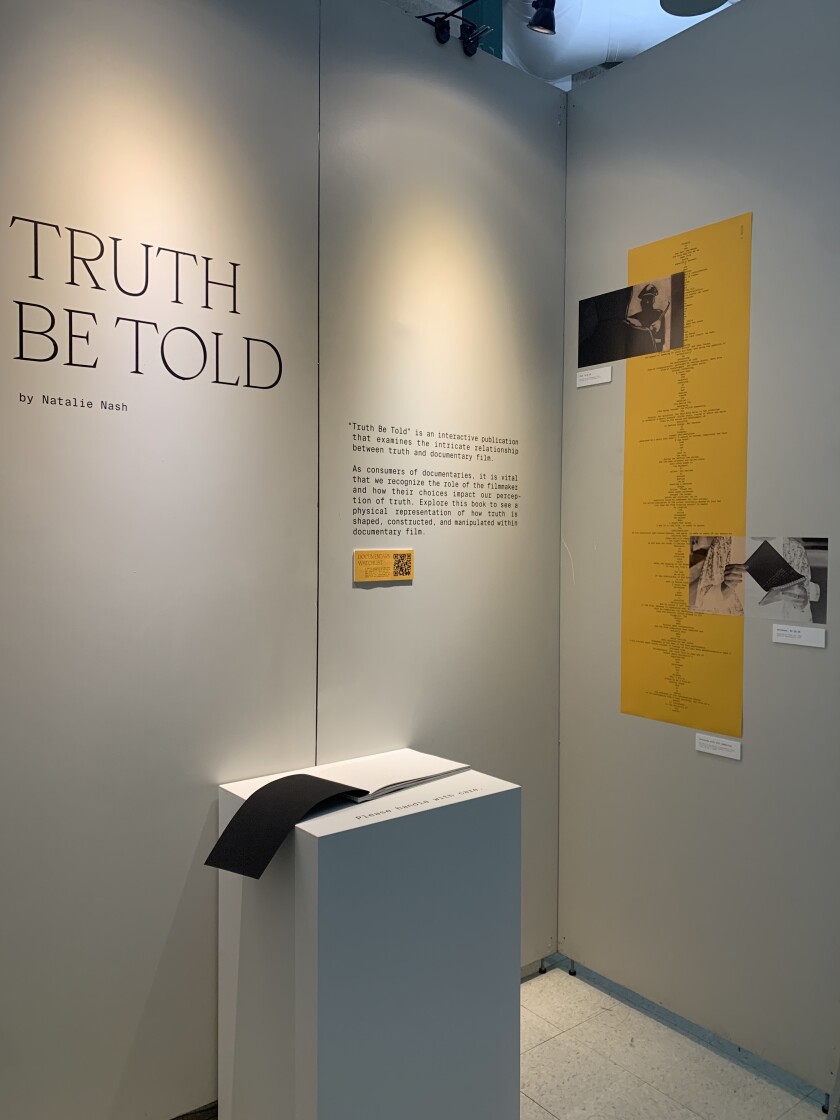Natalie Nash Crafted a Printed Book On Documentary Filmmaking as Part of Her Senior Capstone Project
In their final year at BYU, Graphic Design students complete a capstone project (research paper & visual work) that reflects the sum of their learning from the program. The Design department stipulates that projects should show conceptual understanding of the chosen topic, demonstrate the student’s visual communication and design skills and generate discussion.
Recent graduate Natalie Nash chose to explore the decisions that go into creating documentary films. She crafted a book that invited readers to participate in some of these choices: whether or not to add music, and various types of lighting or narration.

Nash shared her experience working on this capstone project and reflected on how her time at BYU prepared her for it.
Q: How did you apply the skills you learned in class to this experience?
Nash: The capstone project is an accumulation of all that you have learned during your time in the program. In a way, I feel like every skill I have learned in my classes contributed to this project, from learning how to set body copy in Typography 1 to learning how impactful different mediums can be in Design Theory.

Q: What was your project trying to communicate?
Nash: The purpose of my capstone, “Truth Be Told”, was to highlight the complex relationship between truth and documentary film. I wanted the publication to demonstrate how impactful each decision the filmmaker made was to the final cut of the documentary. I felt this would be best communicated to my audience through an interactive book that allowed them to make those decisions themselves.
Q: What surprised you as you researched?
Nash: During the initial research for my paper, I was convinced that some methods used in documentary filmmaking (such as poetic narration) were potentially more effective at conveying an individual’s truth than other methods (like traditional narration or unnarrated).
My mind was changed as I continued to carry out research for the implementation part. I began to understand how the filmmaker’s decision to use one method over another ultimately corrupted any “truth” that could potentially be embedded in that narration.
Q: What are you most proud of in terms of your project?
Nash: Before my capstone project, I had little experience with printing and binding, as most of the work we do in class is digital. This created a bit of a learning curve for me when I decided I wanted my final piece to be a printed book. Although parts of the design process were familiar, I am proud that I stepped outside my comfort zone and learned about the process of designing a physical book.
The filmmaker’s decision to use one method over another ultimately corrupted any “truth” that could potentially be embedded in that narration.
Q: What are your plans post-graduation?
Nash: Since finishing “Truth Be Told”, I am very interested in working in publication design, but I’m not sure I want to make any definite decisions yet. I would like to participate in an internship or two before deciding what I would like my career path to be. There are just so many creative opportunities out there and I want to be able to try out as many as possible!
Q: How have you grown as a result of your time at BYU?
Nash: I have learned to let go of certain expectations and really enjoy the process, even through the more challenging points. Looking back at my time at BYU, those challenging points have been the catalyst for the most growth and I am grateful for how they have contributed to the designer and person I am today.